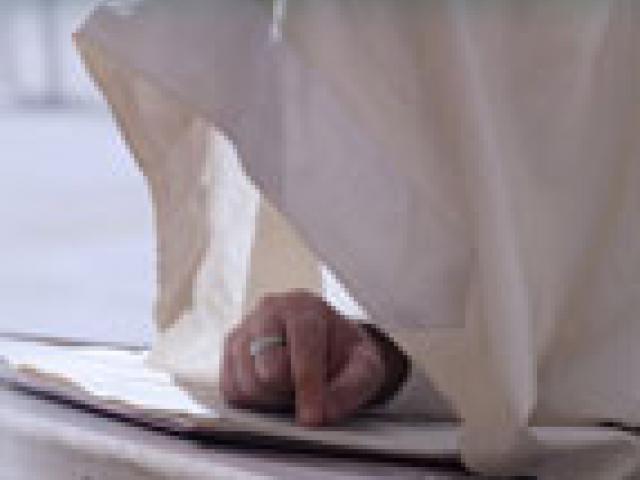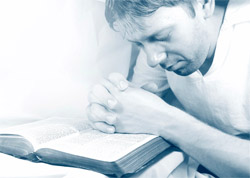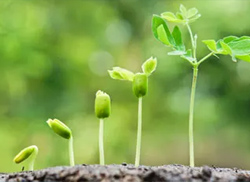Finding Jesus in the Feast of Tabernacles

God gave the biblical festivals to teach the Jewish people about His character and to help us understand His plan of salvation. But all Christians who have been "grafted in" to the olive tree (Romans 11:17) share our rich heritage and roots. So as we approach the last of the High Holy Days on the Jewish calendar, we hope you will find it meaningful.
The Feast of Tabernacles is an eight day festival* that begins at sundown on the first day of the feast (see the Jewish Calendar from Judaism 101).
The Gospels record that our Lord Jesus not only celebrated the festival, but He took traditional elements of the celebration and applied them to His own life and mission. We find this particularly in John 7 and 8 where Jesus uses two traditional symbols from the Feast of Tabernacles celebration, water and light, to help the people understand who He is and what He offers.
In order to understand Jesus' teaching here, we need a bit of background from Leviticus 23. There, Moses instructed the people that the first day and the eighth day of the festival were to be special days of rest, set apart from the others. But the seventh day became known as Hoshana Rabba, "the Great Day." My people developed special observances and traditions to mark this special day in Israel. The most spectacular of these was the water drawing ceremony.
Imagine a whole parade of worshipers and flutists led by the priest to the pool of Siloam (where Jesus told the blind man to bathe his eyes after He put clay over them). The priest has two golden pitchers. One is for wine. He fills the other with water from the pool. As the flutes continue to play, a choir of Israelites chants Psalm 118. The whole procession heads back to the Temple through the Water Gate. A trumpet sounds as the priest enters the Temple area. He approaches the altar where two silver basins are waiting. He pours wine into one of the basins as a drink offering to the Lord and water from the pool of Siloam into the other.
The whole ceremony, with the parade and the flutes and the singing, was such a joyful occasion that one of the ancient rabbis wrote: "Anyone who has not seen this water ceremony has never seen rejoicing in his life."
The ceremony was to thank God for His bounty and to ask Him to provide rain for the crops in the coming year. Today, many people take water for granted. We simply turn the tap and voilà—water! Not so in the Middle East during the first century. Water was often scarce. The people were very much aware of their dependence on God for the rains that were so vital for the preservation of life. No wonder the prophets came to see rain as a symbol of salvation and the work of God's Holy Spirit:
I will sprinkle clean water on you, and you will be clean… (Ezekiel 36:25).
No wonder then that Jesus stood in the Temple on this great day of the feast and cried out:
If anyone thirsts, let him come to Me and drink. He who believes in Me, as the Scripture has said, out of his heart will flow rivers of living water (John 7:37-38).
The Apostle John commented on this speech in verse 39.
But this He spoke concerning the Spirit, whom those believing in Him would receive; for the Holy Spirit was not yet given, because Jesus was not yet glorified.
As the rain falls to nourish the crops, so the Ruach ha Kodesh, the Holy Spirit, falls upon those who have identified with Jesus in His death and resurrection. It is that Spirit that refreshes us, and causes us to grow in grace and in faith. It is that Spirit that allows us to experience Immanuel, God with us. That Spirit is available to us today and every day.
Y'shua's promise to give mayim chayim, living water, prompted even greater discussion and debate during the last day of the festival of Sukkot. The leaders grew angry because the Temple guards refused their order to arrest Jesus. Even when one of their own, Nicodemus, came to Jesus' defense, they still dismissed His claims saying, "A prophet does not come out of Galilee" (verse 52). Apparently, those leaders had forgotten about Isaiah chapter 9:
There will be no more gloom for those who were in distress. In the past He humbled the land of Zebulun and the land of Naphtali, but in the future He will honor Galilee of the Gentiles, by the way of the sea, along the Jordan. The people walking in darkness have seen a great light; of those living in the land of the shadow of death a light has dawned (Isaiah 9:1-2).
And that brings us to the second Sukkot symbol that Jesus used to point to Himself as the fulfillment of Scripture. God had indeed promised that a great light would shine out of Galilee. Y'shua reminded His critics of that powerful and prophetic claim, by using an image that would have been very fresh in the memories of all who heard. Light.
You see, at the end of the first day of the Feast, the Temple was gloriously illuminated. According to the Mishnah (part of the oral tradition of the rabbis), gigantic candelabras stood within the court of the women. Each of the four golden candelabras is said to have been 50 cubits high. A cubit is somewhere between 18 and 22 inches, so we're talking about candelabras that were about 75 feet tall! Each candelabra had four branches, and at the top of every branch there was a large bowl. Four young men bearing 10 gallon pitchers of oil would climb ladders to fill the four golden bowls on each candelabra. And then the oil in those bowls was ignited.
Picture sixteen beautiful blazes leaping toward the sky from these golden lamps. Remember that the Temple was on a hill above the rest of the city, so the glorious glow was a sight for the entire city to see. In addition to the light, Levitical musicians played their harps, lyres, cymbals and trumpets to make joyful music to the Lord. What a glorious celebration! The light was to remind the people of how God's Shekinah glory had once filled His Temple. But in the person of Jesus, God's glory was once again present in that Temple. And He used that celebration to announce that very fact. He was teaching in the court of women just after the Feast, perhaps standing right next to those magnificent candelabras when He declared to all who were gathered there,
I am the light of the world. Whoever follows Me will never walk in darkness, but will have the light of life (John 8:12).
Many refused to have their own darkness exposed by that light. But there were those who were drawn to the light, whose hearts burned with the truth of Y'shua.
And the light of Y'shua is still shining brightly today. As Jewish people celebrate this festival, please join us in praying that they will come to know the One of whom all the festivals speak. Pray that the living water of Messiah Jesus will quench their thirst and fill them with the very Spirit of the God of Israel.
*The Scriptures actually speak of the Feast of Tabernacles as being seven days, but it also speaks of an eighth day on which a holy convocation is to be held, with sacrifices made and no traditional work done on that day. See Leviticus 23:34-36.





